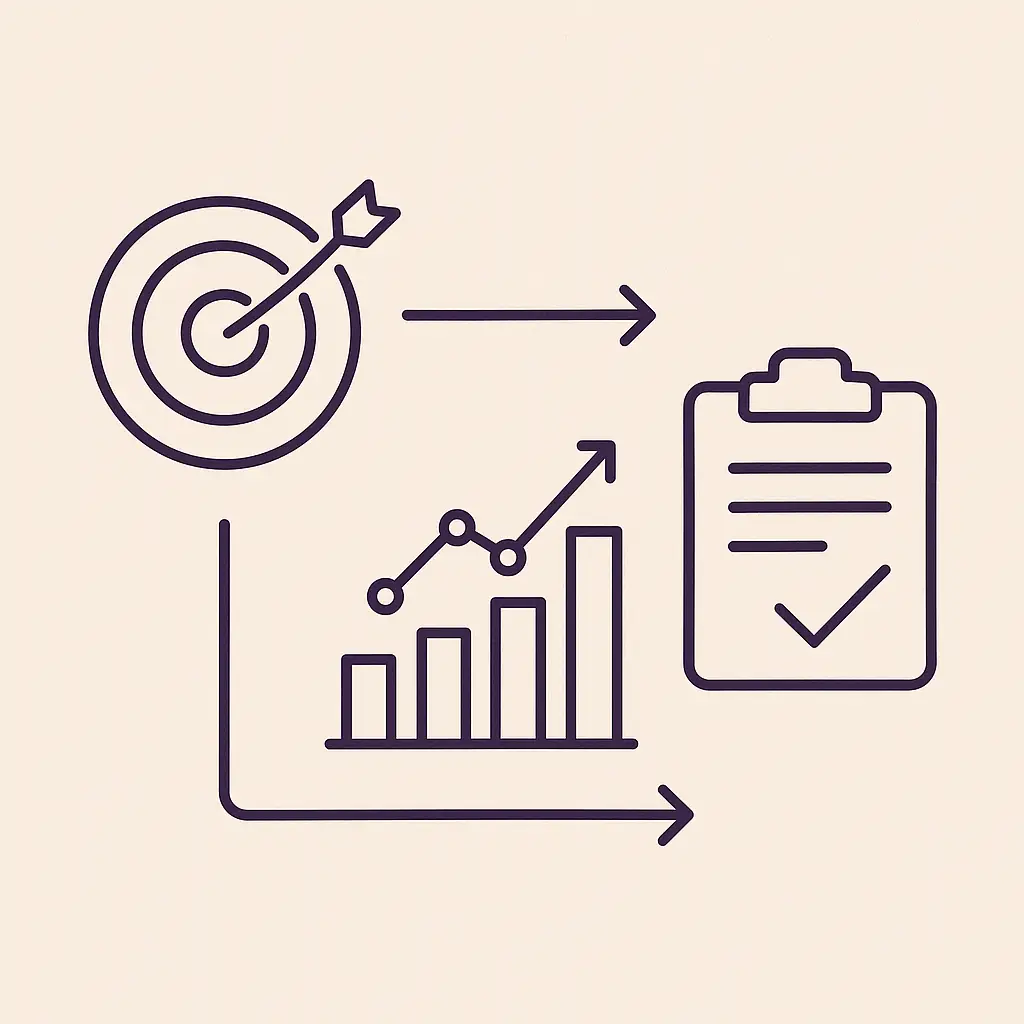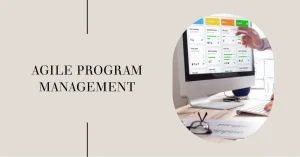Introduction to Program Life Cycle
Understanding the program life cycle is crucial for ensuring that projects align with strategic objectives and deliver value. The program life cycle encompasses a series of phases that guide the planning, execution, and evaluation of programs, ultimately leading to successful outcomes.
Defining the Program Life Cycle and Its Phases
The program life cycle typically consists of the following phases:
- Initiation: This phase involves defining the program’s purpose, scope, and objectives. It sets the foundation for what the program aims to achieve and identifies key stakeholders.
- Planning: During this phase, detailed plans are developed, including resource allocation, timelines, and risk management strategies. Effective planning is essential for guiding the program toward its goals.
- Execution: This is where the actual work takes place. Resources are mobilized, and tasks are carried out according to the plan. Communication and coordination among team members are vital during this phase to ensure progress.
- Monitoring and Controlling: Throughout the execution phase, continuous monitoring is necessary to track progress against the plan. This phase involves assessing performance, managing changes, and ensuring that the program stays on course.
- Closure: The final phase involves completing all program activities, evaluating outcomes, and documenting lessons learned. This phase is critical for assessing the overall success of the program and for informing future initiatives.
Importance of Measuring Success During Each Phase
Measuring success at each phase of the program life cycle is essential for several reasons:
- Alignment with Objectives: Regular assessments ensure that the program remains aligned with its strategic objectives and can adapt to any changes in the organizational environment.
- Risk Management: By measuring performance, project analysts and program directors can identify potential risks early and implement mitigation strategies, thereby reducing the likelihood of project failure.
- Resource Optimization: Continuous evaluation allows for better resource allocation and utilization, ensuring that time and budget constraints are managed effectively.
- Stakeholder Engagement: Keeping stakeholders informed about progress and performance fosters trust and engagement, which is vital for program success.
Introducing Key Performance Indicators (KPIs) as Tools for Assessment
Key Performance Indicators (KPIs) are essential metrics that help assess the performance of a program throughout its life cycle. KPIs provide quantifiable measures that can indicate how well the program is achieving its objectives.
- Types of KPIs: KPIs can vary widely depending on the program’s goals but often include metrics related to time, cost, quality, stakeholder satisfaction, and risk management.
- Setting KPIs: It is crucial to establish relevant and measurable KPIs during the planning phase. These indicators should be aligned with the program’s objectives and should be revisited regularly to ensure they remain applicable.
- Using KPIs for Decision-Making: By analyzing KPI data, project analysts and program directors can make informed decisions, adjust strategies, and enhance overall program performance.
The program life cycle is a structured approach that guides project management efforts. By measuring success through KPIs at each phase, organizations can ensure that their programs are not only effective but also aligned with broader strategic goals. This proactive approach to performance assessment is vital for achieving long-term success in project management.
Understanding Key Performance Indicators (KPIs)
Particularly within the program life cycle, Key Performance Indicators (KPIs) serve as critical tools for measuring success and guiding decision-making. This section will delve into the definition of KPIs, their significance in project management, the distinction between leading and lagging indicators, and how they facilitate effective tracking of progress.
Definition of KPIs and Their Role in Project Management
Key Performance Indicators (KPIs) are quantifiable metrics that organizations use to evaluate the success of a project or program in achieving its objectives. In project management, KPIs provide a framework for assessing performance against predefined goals, enabling project analysts and program directors to gauge the effectiveness of their strategies and initiatives. By establishing clear KPIs, teams can align their efforts with organizational objectives, ensuring that all stakeholders are focused on the same outcomes.
Differentiating Between Leading and Lagging KPIs
KPIs can be categorized into two main types: leading and lagging indicators.
- Leading KPIs are predictive measures that provide insights into future performance. They help project managers identify potential issues before they escalate, allowing for proactive adjustments. For example, the number of completed tasks or milestones achieved within a specific timeframe can serve as a leading KPI, indicating whether a project is on track to meet its deadlines.
- Lagging KPIs, on the other hand, reflect past performance and outcomes. They are typically used to assess the results of actions taken during the project. Common examples include budget variance, project completion percentage, and customer satisfaction scores. While lagging KPIs are essential for understanding the overall success of a program, they do not provide foresight into future performance.
How KPIs Help in Tracking Progress and Making Informed Decisions
KPIs play a vital role in tracking progress throughout the program life cycle. By regularly monitoring these indicators, project managers can:
- Identify Trends: Analyzing KPIs over time allows teams to spot trends and patterns, which can inform future project planning and execution.
- Facilitate Informed Decision-Making: With clear data at their disposal, project analysts and program directors can make informed decisions regarding resource allocation, risk management, and strategic adjustments. This data-driven approach enhances the likelihood of achieving project goals.
- Enhance Accountability: KPIs establish clear expectations for performance, fostering accountability among team members. When everyone understands the metrics by which success is measured, they are more likely to take ownership of their contributions.
KPIs are indispensable for assessing program performance effectively. By defining relevant indicators, distinguishing between leading and lagging measures, and utilizing these metrics to track progress, project analysts and program directors can enhance their decision-making processes and drive their programs toward success.
Identifying Essential KPIs for Each Phase of the Program Life Cycle
Measuring success is crucial for ensuring that programs meet their objectives and deliver value. Key Performance Indicators (KPIs) serve as vital tools for assessing program performance throughout its life cycle. Below, we detail specific KPIs relevant to each phase of the program life cycle, providing project analysts and program directors with a framework to evaluate effectiveness and drive improvements.
1. Initiation Phase
During the initiation phase, the foundation of the program is established. The following KPIs are essential for gauging the effectiveness of this phase:
- Stakeholder Engagement Level: This KPI measures the extent to which stakeholders are involved and committed to the program. High engagement levels often correlate with better support and resource availability throughout the program.
- Initial Risk Assessment Accuracy: This indicator evaluates how accurately potential risks were identified and assessed at the outset. A precise initial risk assessment can significantly influence the program’s success by allowing for proactive risk management strategies.
2. Planning Phase
The planning phase is critical for setting the direction of the program. Key KPIs to monitor during this phase include:
- Resource Allocation Effectiveness: This KPI assesses how well resources (human, financial, and material) are allocated to various tasks and activities. Effective resource allocation is vital for optimizing performance and minimizing waste.
- Timeline Adherence Rates: This indicator tracks whether the program is on schedule according to the planned timeline. Adherence to timelines is crucial for maintaining momentum and ensuring timely delivery of program outcomes.
3. Execution Phase
In the execution phase, the program’s plans are put into action. The following KPIs are important for measuring performance during this phase:
- Project Milestone Completion Rate: This KPI measures the percentage of milestones achieved on time. It provides insight into the program’s progress and helps identify any delays that may require intervention.
- Budget Variance: This indicator compares the planned budget against actual expenditures. Monitoring budget variance is essential for financial control and ensuring that the program remains within its financial constraints.
4. Monitoring and Controlling Phase
This phase involves tracking progress and making necessary adjustments. Key KPIs to focus on include:
- Change Request Frequency: This KPI tracks how often changes are requested during the program. A high frequency of change requests may indicate issues with initial planning or stakeholder alignment.
- Performance Against Baseline Metrics: This indicator measures how well the program is performing against established baseline metrics, such as cost, schedule, and quality. Regularly assessing performance against these metrics helps ensure that the program stays on track.
5. Closure Phase
The closure phase is where the program is finalized and evaluated. Important KPIs for this phase include:
- Stakeholder Satisfaction Surveys: This KPI gauges the satisfaction levels of stakeholders with the program’s outcomes. High satisfaction rates are indicative of successful stakeholder engagement and program delivery.
- Post-Implementation Review Outcomes: This indicator assesses the effectiveness of the program after its completion. It involves evaluating whether the program met its objectives and identifying lessons learned for future initiatives.
By focusing on these essential KPIs throughout each phase of the program life cycle, project analysts and program directors can effectively measure success, identify areas for improvement, and enhance overall program performance.
Implementing KPIs Effectively
Particularly within the program life cycle, the implementation of Key Performance Indicators (KPIs) is crucial for measuring success and ensuring alignment with strategic objectives. For project analysts and program directors, understanding how to effectively implement and utilize KPIs can significantly enhance program performance assessment. Here are key points to consider:
1. Establish a Clear Process for KPI Selection and Alignment with Program Goals
- Define Objectives: Begin by clearly defining the program’s objectives. This ensures that the selected KPIs are directly aligned with what the program aims to achieve. For instance, if a program’s goal is to improve customer satisfaction, relevant KPIs might include customer feedback scores or service response times.
- Involve Stakeholders: Engage stakeholders in the KPI selection process. Their insights can help identify what metrics are most relevant and valuable for assessing program success. This collaborative approach fosters buy-in and ensures that the KPIs reflect the interests of all parties involved.
- SMART Criteria: Ensure that the KPIs adhere to the SMART criteria—Specific, Measurable, Achievable, Relevant, and Time-bound. This framework helps in selecting indicators that are not only quantifiable but also meaningful in the context of the program’s goals.
2. Utilize Technology and Tools for KPI Tracking and Reporting
- Adopt KPI Management Software: Leverage technology by using KPI management tools that facilitate real-time tracking and reporting. These tools can automate data collection and visualization, making it easier to monitor performance against established KPIs.
- Dashboards and Reporting Tools: Implement dashboards that provide a visual representation of KPI data. This allows program directors and analysts to quickly assess performance and identify areas needing attention. Regular reporting can also help in communicating progress to stakeholders.
- Integration with Project Management Systems: Ensure that the KPI tracking tools are integrated with existing project management systems. This integration allows for seamless data flow and enhances the accuracy of performance assessments.
3. Ensure Regular Review and Adjustment of KPIs to Reflect Program Changes
- Continuous Monitoring: Establish a routine for reviewing KPIs. Regular monitoring helps in identifying trends and patterns that may indicate the need for adjustments in strategy or focus. This proactive approach can prevent potential issues from escalating.
- Adapt to Changes: Programs often evolve due to changing circumstances, stakeholder needs, or market conditions. Be prepared to adjust KPIs accordingly to ensure they remain relevant and aligned with the program’s current objectives.
- Feedback Loops: Create mechanisms for feedback on KPI effectiveness. This can involve soliciting input from team members and stakeholders about the relevance and clarity of the KPIs. Use this feedback to refine the selection and implementation process continuously.
By establishing a clear process for KPI selection, utilizing technology for tracking, and ensuring regular reviews, project analysts and program directors can effectively implement KPIs that not only measure program performance but also drive continuous improvement. This strategic approach to KPI management is essential for achieving program success and delivering value to stakeholders.
Challenges in Measuring Program Success
Measuring the success of a program throughout its life cycle is a complex endeavor that requires careful consideration of various factors. Project analysts and program directors often encounter several challenges when attempting to assess program performance using Key Performance Indicators (KPIs). Here are some of the most common challenges faced in this process:
- Identifying Relevant KPIs Amidst Numerous Data Points: One of the primary challenges is sifting through a vast array of data to pinpoint which KPIs are truly relevant to the program’s objectives. With the abundance of metrics available, it can be overwhelming to determine which indicators will provide meaningful insights into program performance. Analysts must align KPIs with strategic goals, ensuring that they reflect the program’s success factors without becoming bogged down by irrelevant data points.
- Balancing Qualitative and Quantitative Measures: Effective program evaluation requires a balance between qualitative and quantitative measures. While quantitative KPIs, such as budget adherence and schedule variance, provide concrete data, qualitative measures, such as stakeholder satisfaction and team morale, are equally important for a holistic view of program success. Striking this balance can be challenging, as qualitative data is often more subjective and harder to quantify, yet it can provide critical insights into the program’s impact and effectiveness.
- Addressing Resistance to Change in KPI Implementation: Implementing new KPIs can often meet with resistance from team members and stakeholders who may be accustomed to existing metrics or processes. This resistance can stem from a fear of change, a lack of understanding of the new KPIs, or concerns about how these changes will affect their roles. Overcoming this challenge requires effective communication and change management strategies to ensure that all stakeholders understand the importance of the new KPIs and are engaged in the measurement process.
While KPIs are essential for measuring program success, the challenges of identifying relevant indicators, balancing different types of measures, and managing resistance to change must be addressed to ensure effective program performance assessment. By recognizing and tackling these challenges, project analysts and program directors can enhance their ability to measure success throughout the program life cycle.
Conclusion and Future Trends in KPI Measurement
Particularly within the program life cycle, Key Performance Indicators (KPIs) serve as vital tools for assessing and enhancing program performance. They provide measurable values that help project analysts and program directors gauge the effectiveness of their initiatives, ensuring that objectives are met and resources are utilized efficiently. The significance of KPIs cannot be overstated, as they not only facilitate informed decision-making but also foster accountability and transparency throughout the program life cycle.
As we look to the future, several emerging trends are shaping the KPI measurement:
- Data Analytics: The integration of advanced data analytics is revolutionizing how KPIs are tracked and interpreted. By leveraging big data, organizations can gain deeper insights into program performance, identify patterns, and make data-driven decisions. This trend allows for more precise forecasting and enhances the ability to respond to challenges proactively.
- Artificial Intelligence (AI): AI technologies are increasingly being utilized to automate KPI tracking and analysis. Machine learning algorithms can analyze vast amounts of data in real-time, providing program directors with timely insights and predictive analytics. This not only streamlines the measurement process but also enhances the accuracy of performance assessments.
- Real-Time Reporting: The shift towards real-time reporting is another significant trend. Stakeholders now expect immediate access to performance data, which necessitates the development of dynamic dashboards and reporting tools. This immediacy allows for quicker adjustments to strategies and fosters a culture of agility within organizations.
- Customization and Flexibility: As programs become more complex and diverse, the need for customized KPIs that align with specific program goals is becoming increasingly important. Organizations are encouraged to develop flexible KPI frameworks that can adapt to changing circumstances and stakeholder needs.
The importance of KPIs in the program life cycle is paramount for ensuring successful outcomes. As project analysts and program directors navigate program management, it is crucial to embrace these emerging trends in KPI measurement. By continually adapting and innovating their KPI strategies, organizations can enhance their ability to measure success effectively and drive program performance to new heights. The future of KPI measurement is bright, and those who leverage these advancements will be well-positioned to achieve their program objectives.
Find out more about Shaun Stoltz https://www.shaunstoltz.com/about/.
This post was written by an AI and reviewed/edited by a human.



